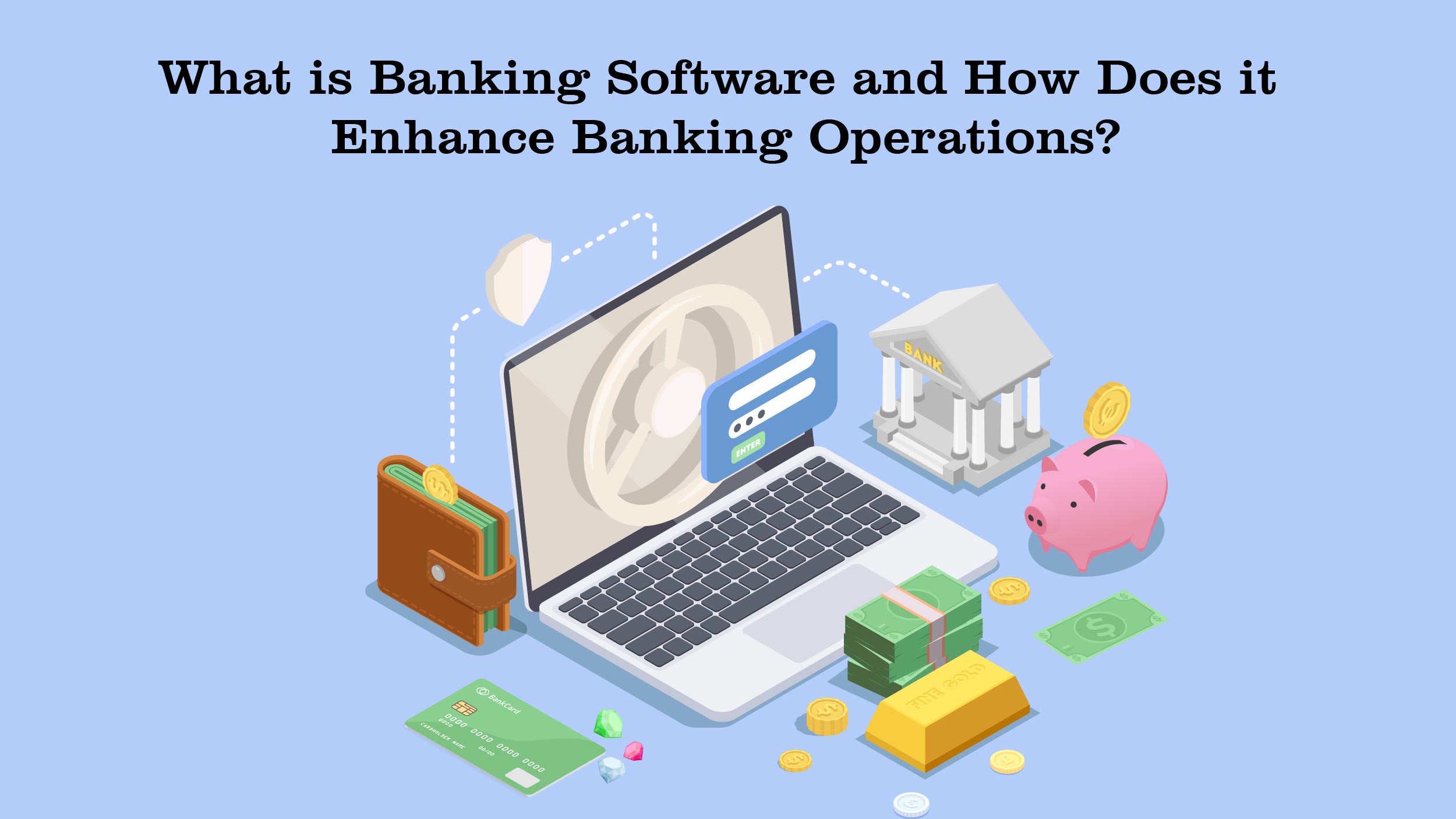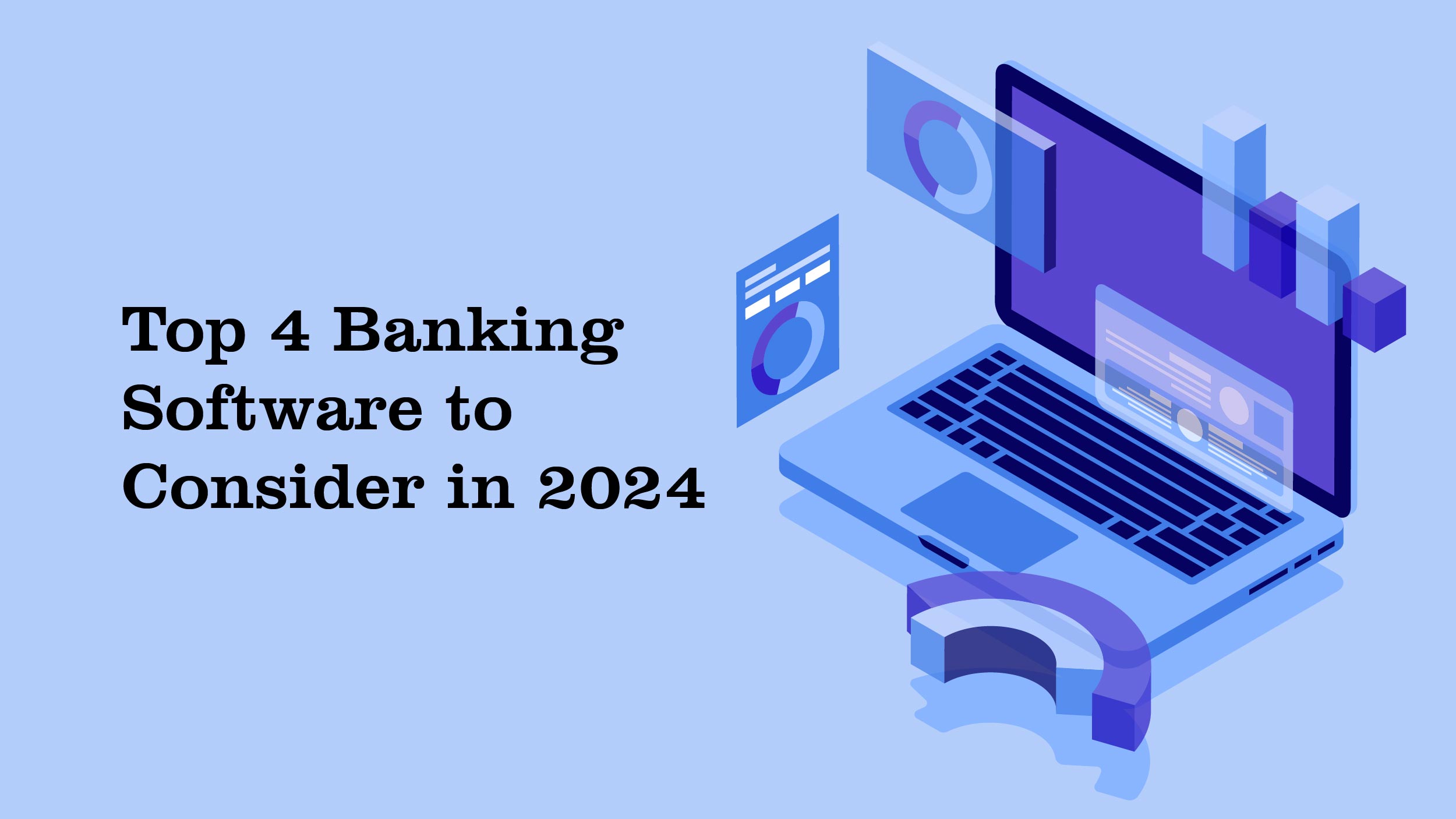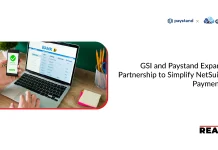The world is undergoing a profound transformation through digitalization, and nowhere is this more evident than in the banking sector. In this fiercely competitive landscape, companies vie for customer loyalty by offering cutting-edge banking software that is not only convenient and reliable but also safe, compliant, and modern. Gone are the days when traditional banks held sway; today, success in financial services hinges on providing superior software solutions to meet evolving customer needs and expectations.
Let’s delve further into this revolutionary banking technology that has significantly influenced the financial domain.
What is Banking Software and How Does it Enhance Banking Operations?

Banking software encompasses a collection of applications and systems that financial entities utilize to oversee different facets of their activities, such as customer engagements, transaction handling, regulatory adherence, and hazard mitigation. These software solutions are pivotal in optimizing banking functions through several means:
Customer Accessibility and Experience: Banking technology combines different channels, like online and mobile banking, to elevate accessibility and enhance the overall customer journey. This guarantees that customers have access to banking services through diverse channels, consequently raising convenience levels and satisfaction rates.
Efficiency and Productivity: Banking software is strategically developed to enhance and automate a range of operational functions, enhancing the efficiency and productivity of corporate treasury, central banking, and international back-office processes. Its capabilities include payment management, invoice generation, tax processing, and the enhancement of financial operations and oversight.
Core Banking System Management: The core banking system stands as a pivotal element within financial software, representing a substantial investment for retail banks. It oversees essential operations like client account management, transaction processing, and report generation. Safeguarding the seamless operation and security of this core banking system remains a paramount concern for financial institutions.
Risk Management and Compliance: Banking software integrates functionalities aimed at managing risks and complying with specific local laws and regulations. It assists financial institutions in recognizing patterns, streamlining operations, enhancing security measures, and boosting efficiency to guarantee adherence to regulatory standards.
Innovation and Flexibility: Modern banking software delivers advancements in technology, reliability, and reliability. It establishes a versatile foundation for developing and launching the software, enabling financial institutions to integrate cutting-edge technologies such as artificial intelligence (AI) and machine learning (ML) to streamline processes, enhance customer support, and detect fraudulent behavior. Furthermore, cloud computing has revolutionized banking procedures, enhancing security, efficiency, and customer contentment.
Top 4 Banking Software to Consider in 2024

Various approximations indicate that around half of the market share is commanded by the top 10 financial software firms. The following compilation outlines the prominent bank management software solutions to look for not only in 2024 but also in the future.
1. Temenos Transact
Temenos Transact leverages cloud-native and platform-independent technology to deliver comprehensive banking features encompassing retail, corporate, treasury, wealth management, and payment solutions. By embracing state-of-the-art banking technology coupled with adaptable and robust business assistance, financial institutions can unveil pioneering products and services to cater to their clientele.
Features of Temenos Transact:
- The innovation sandbox provides access to the Temenos Banking Cloud, facilitating quick innovation and speedy product introductions.
- The range of products available enables the integration of fresh, pertinent, appealing, and inventive products sourced from diverse industries.
- Regulatory compliance and adherence to market practices ensure conformity with regulations and prompt implementation of market standard modifications.
- Continuous deployment entails the integration of new features without any system downtime, guaranteeing seamless customer services and operations.
2. Finacle
Finacle presents a comprehensive range of solutions that empower financial institutions to enhance their operations through enhanced engagement, innovation, efficiency, and evolution. These banking software solutions cover essential banking functions, lending processes, digital interaction, payment systems, cash flow management, wealth administration, and treasury operations.
Features of Finacle:
- A composable architecture enables the integration of various modern and traditional customer engagement channels, enterprise capabilities, lines of business components, and business segments.
- Flexible deployment enables banks to deploy and upgrade solutions according to their business priorities.
- An engagement hub assists banks in enhancing customer onboarding, sales, service, and communication.
- Innovation support empowers banks to innovate effectively, generating new value and enhancing competitiveness.
3. Flinks
Flinks enables the secure exchange of financial information, empowering you to create enhanced digital banking solutions. It allows for the extraction of valuable insights from enhanced data, ensuring that clients can securely share data with fintech tools crucial to your operations.
Features of Flinks:
- Enabling institutions to connect with user-permissioned data enriches insights and services. This encompasses Know Your Customer (KYC) data, account information, and transactional records.
- Financial data enrichment supplements raw financial data with contextual details, enabling improved decision-making and personalized offerings.
- Flinks’ Outbound feature enables customers to securely share their data with other fintech applications, fostering a collaborative and open banking ecosystem.
- Secure data transfer guarantees the safe transmission of files from the front end to the document repository system for secure storage.
4. Turnkey Lender
Turnkey Lender provides a comprehensive loan management solution that facilitates the simplification of your credit processing through the utilization of AI-driven decision-making algorithms, machine learning, and robust integration functionalities.
Features of Turnkey Lender:
- Proprietary AI: Utilize the capabilities of AI-driven decision-making algorithms and machine learning to streamline credit processing and facilitate swift, informed loan decisions.
- Loan underwriting: Implement comprehensive risk assessment, borrower evaluation, decision rule validation, loan agreement creation, and efficient loan offer management functionalities.
- Powerful credit product builder: Create versatile credit products featuring intricate schedules, fees, taxes, and interest rates. Benefit from customizable rules and automated generation of loan statements.
- Enterprise-grade reporting: Automate the generation of configurable or pre-defined dynamic reports to swiftly gain valuable insights, empowering informed decision-making in seconds.
Also Read: From Queues to Clicks: Is Online Banking Worth the Switch?
Here are some of the latest trends in financial software development to watch out for.
● Expanding Communication Channels
The inclusion of various platforms such as mobile applications, web apps, chatbots, and digital assistants allows banks to expand their communication avenues. This strategy enables banks to enhance customer engagement, tailor services to individual preferences, boost cross-selling and upselling initiatives, drive revenue growth, foster customer retention, and acquire valuable customer data for informed decision-making purposes.
● Transitioning Towards Digital Banking Software Solutions
The transition to digital banking allows banks to eliminate the need for in-person interactions with bank personnel. By adopting this approach, banks can transform into paperless entities with no physical branches, providing a wide array of services and products online. This transformation can lead to considerable savings in terms of labor and operational expenses, streamline various procedures, and improve overall customer satisfaction.
● Emergence of Artificial intelligence
The expansion of banks’ revenue will be fueled by the advancement of machine learning and cognitive computing. Through the integration of AI technologies for fraud detection, banks can minimize monetary losses and safeguard their clients’ financial accounts and sensitive information. Additionally, AI-powered chatbots can deliver immediate customer support by steering individuals through FAQs or suggesting relevant services.
● Modernization of Front-end and Back-end Systems
Banking software applications age as they transition into legacy systems. The evolution involves updating outdated core systems, old banking programs, unappealing interfaces, and intricate user experiences, necessitating ongoing enhancements. Consequently, financial institutions allocate resources towards adopting novel technologies to streamline modernization procedures and enhance efficiency.
Wrapping it Up
Banking software stands as a cornerstone in the ongoing digital transformation of the banking industry. From modernizing customer-facing interfaces to upgrading backend systems for enhanced security and efficiency, the role of banking technology cannot be overstated.
The journey towards modernizing financial software is an ongoing one, characterized by constant innovation, collaboration, and a commitment to delivering exceptional user experiences. As we look ahead, it’s clear that the future of banking software holds immense promise, paving the way for a more connected, efficient, and secure financial ecosystem for customers and institutions alike.




